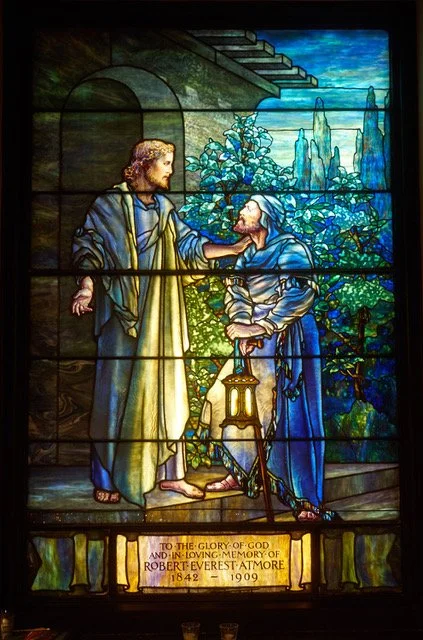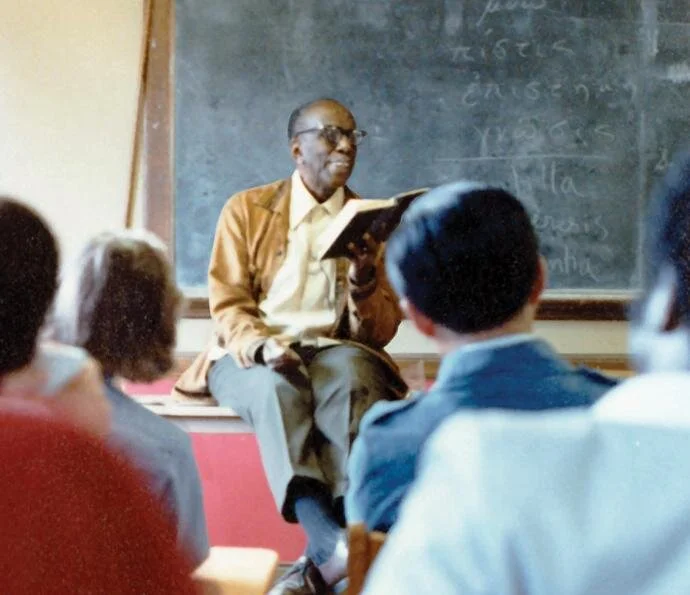Friday Reflection II: The Power of Words–Black abolitionist, journalist, poet Frances Watkins Harper (1825-1911) returns to view
Frances Watkins Harper
I was stunned by the connections that emerged this week. Frances Watkins Harper, Black abolitionist contemporary of Harriet Beecher Stowe, engaged repeatedly with Stowe’s Uncle Tom’s Cabin (1851-2). And Watkins Harper lived almost half her long (85 years) and productive life in Philadelphia, where she died and is buried.
That life spanned the convulsed nineteenth century to just before the ratification of the 19th Amendment (women’s vote) in 1920. Her unique course responded to nourishing shelter early on and, later, to fraught borders where she witnessed, absorbed, and communicated. Her primary medium: the word, published and spoken.
She was born a free Black in a slave state in 1825. She was raised in Baltimore by her uncle, an educator, minister, abolitionist, journalist, and was schooled at his excellent Academy. Upon graduating at 13, Frances Watkins worked in the home of a Quaker bookshop owner who lent her books. Between family and employer, she embraced learning, the power of words, the rigor of arguments, the centrality of the Protestant faith in her Black community, and the calling to social justice. She began publishing poems at about age 14; her first anthology (Autumn Leaves or Forest Leaves) emerged in 1845 at age 20 and went through various editions.
A distinctive voice was born. She adapted myriad poetic sources to explore the Black experience through biblical imagery and language, and an often hymnal musicality. Published throughout her life, her poems and prose went through many editions, read by Blacks and whites, with new works and missing fragments still emerging in Black periodicals.
The Fugitive Slave Act of 1850, which endangered free Blacks as much as runaway slaves, radically changed her life. She moved alone to free states for safety, teaching and helping local Underground Railroad systems, deepening her abolitionist commitment.
She also began to speak publicly, quickly becoming an influential activist much in demand nationally. One who heard her reported to the editor of abolitionist newspaper The Liberator: “Miss Watkins is a young lady of color, of fine attainments, of superior education, and an impressive speaker, leaving an impression, wherever she goes, which will not soon be forgotten.”
Inevitably, Watkins engaged with Harriet Beecher Stowe’s groundbreaking Uncle Tom’s Cabin (serialized 1851, then published as a book in 1852). In a lecture sometime after 1853, Watkins spoke of Stowe’s book as a case of representational choices. She contrasted Stowe‘s direction, clothing “American slavery with the graceful garb of fiction,” with that of Solomon Northrup’s sensational 1853 memoir, 12 Years a Slave. In describing Northrup’s narrative, Watkins herself shifted language dramatically, conjuring “the dark habitation of Southern cruelty where slavery fattens and feasts on human blood with such mournful revelations that one might almost wish for the sake of humanity that the tales of horror that he reveals were not so.” For historian Manisha Sinha, Northrup’s “unvarnished memoir of harsh labor” and “commodification of black bodies” was truer than Stowe’s novel “saturated with the tropes of romantic racialism.”
Watkins’ comparison is subtler than it seems. Fiction and memoirs are different literary modes but both accommodate various voices, with different relationships to truth and forms of tact. Stowe built a fictional story, from “true” testimonials of fugitives on the Underground Railroad she heard in Cincinnati, that is more “graceful” than Northrup’s hard-hitting account.
Like Stowe, Watkins based what she said and did on what she saw and heard. And explored Stowe’s work thoughtfully. She published at least one poem—similarly fictional based on testimonials—that drew directly from Uncle Tom’s Cabin. Her Eliza Harris of 1853 celebrates Eliza’s perilous but successful escape in the lyrical terms of literary romanticism. Its final verse: “With the rapture of love and fullness of bliss,/She plac’d on his brow a mother’s fond kiss:—/Oh! poverty, danger and death she can brave,/For the child of her love is no longer a slave!” The following year (1854), Watkins published its polar opposite: The Slave Mother, A Tale of Ohio, a poem that is gratingly painful, about an enslaved mother’s anguish as her child is torn from her to be sold. Its final verse: “No marvel, then, these bitter shrieks/Disturb the listening air:/ She is a mother, and her heart/Is breaking in despair.” Watkins regularly conjured physically violent images in her poetry; Northrup’s brutal memoir may have encouraged instead the emotional violence of The Slave Mother, which became one of Watkins’ most famous and influential works, reportedly playing a role in Toni Morrison’s 1987 Beloved.
However different, both Watkins’ slave-mother poems feature a woman’s experience, poetic use of her interest in women’s lives and rights that she later developed in speeches, articles, and campaigns.
Finally, Watkins lived twice in Philadelphia, in 1855 then permanently after 1870, following a brief marriage to widower Fenton Harper (c. 1860; d. 1864), where she raised their daughter and possibly his two sons. As ever writing (then as Watkins Harper), traveling as a lecturer and journalist, and founding and joining activist groups, she also worked in Black churches in N. Philadelphia, where she first lived, and taught Sunday school at Mother Bethel. At some point she moved to 1006 Bainbridge, only blocks from St. Stephen’s.
Watkins Harper’s home at 1006 Bainbridge St., Philadelphia
Frances Watkins Harper also pursued her beliefs and mission in her choice of church: the First Unitarian Church at 22nd and Chestnut, congregation for Abolitionist friends committed, as she was, to integration. Her funeral took place there in 1911. She lies buried, however, in the historic African American burial site, Eden Cemetery, just outside Philadelphia.
This region has re-awakened to Watkins Harper’s presence and achievements. She’s being honored this year in Philadelphia (The Frances Project) and Harrisburg (the Commonwealth Monument Project) during the centennial of the women’s vote—in an election year. The pandemic tragically cancelled the first programs and shifted this summer’s to an online offering; those for the fall are TBA. We have much to learn from these.
We can also walk her streets, pass her house (now on the Underground Railroad tour), visit her church and grave. And reflect on putting her multi-faceted example to further work.
—Suzanne Glover Lindsay, St. Stephen’s historian and curator









